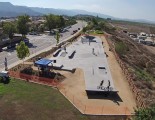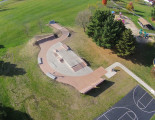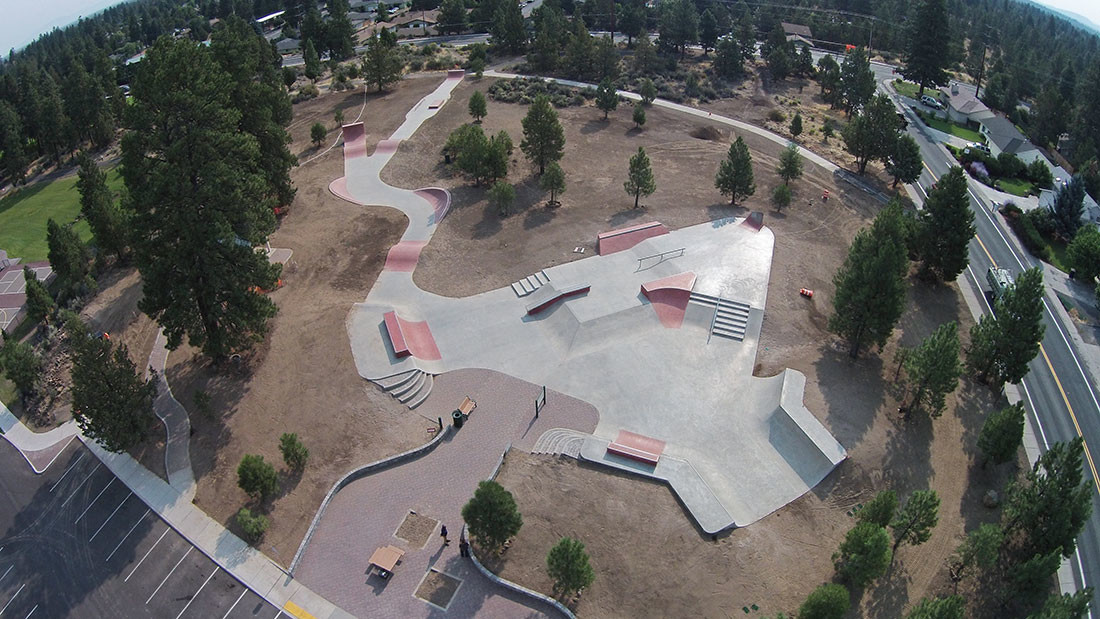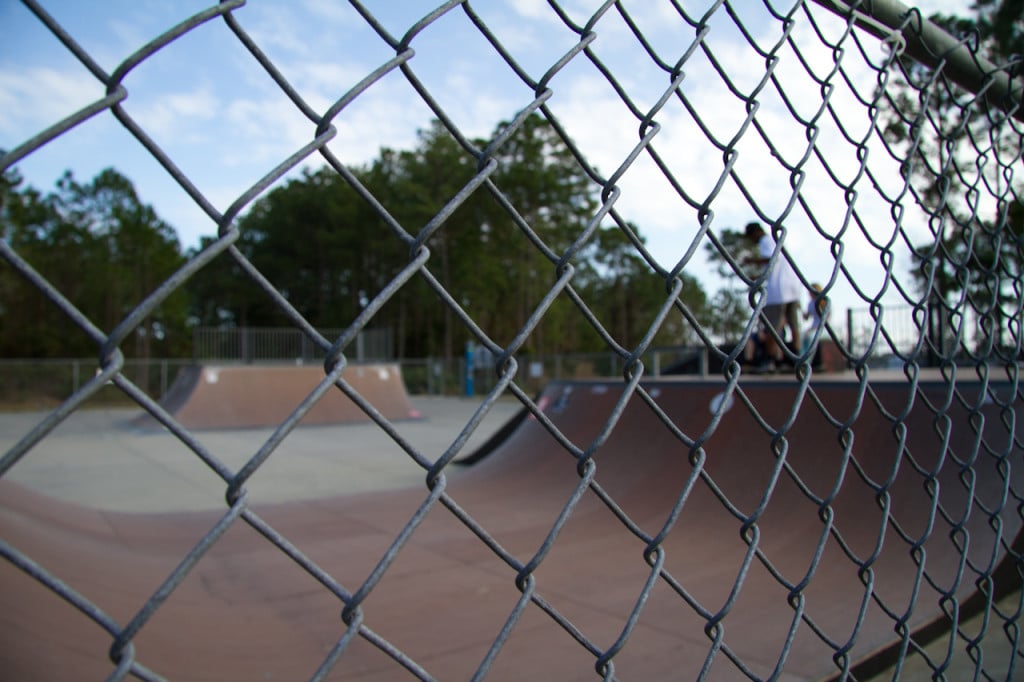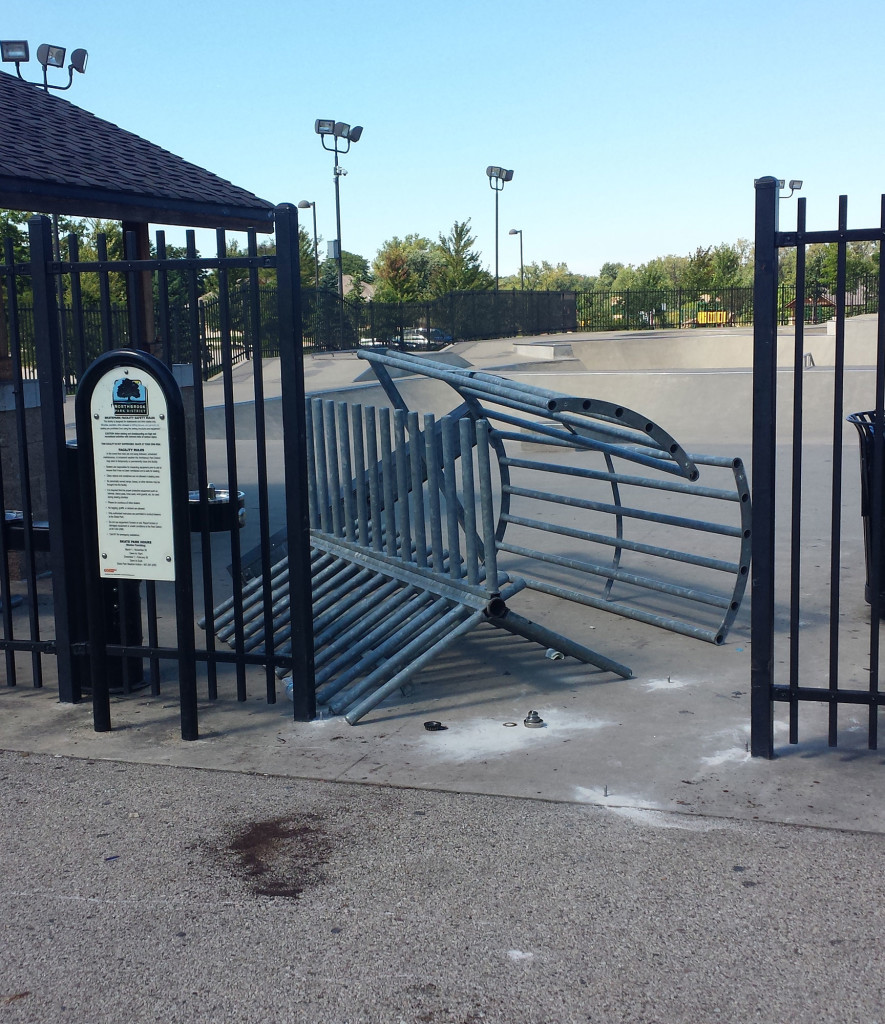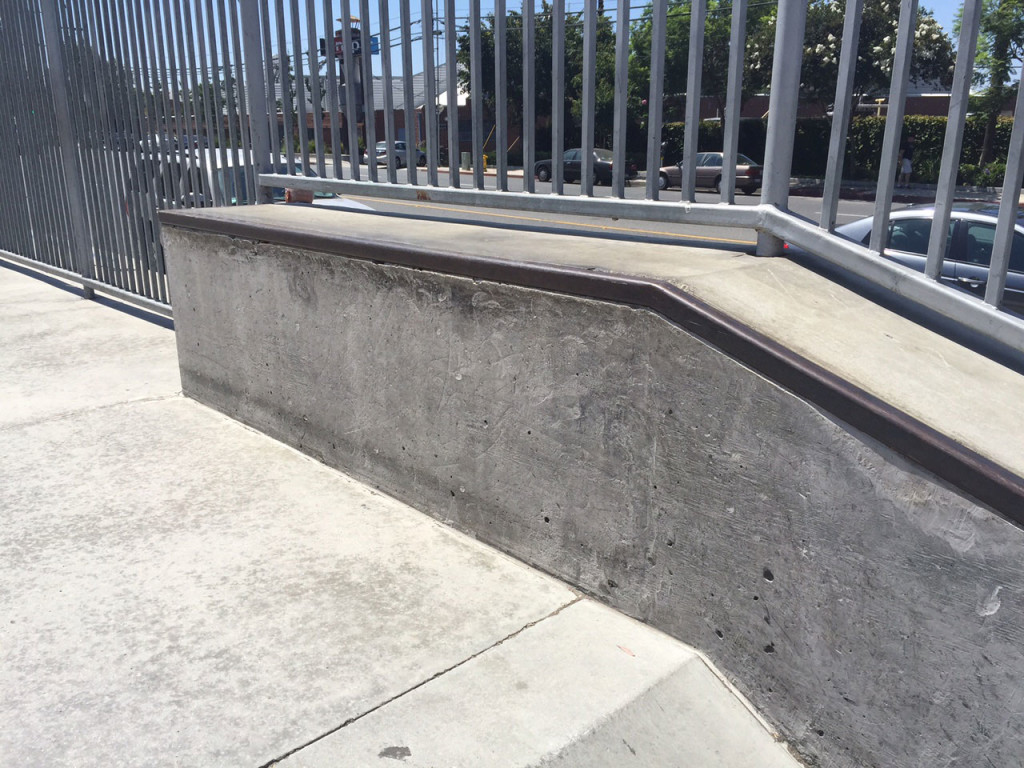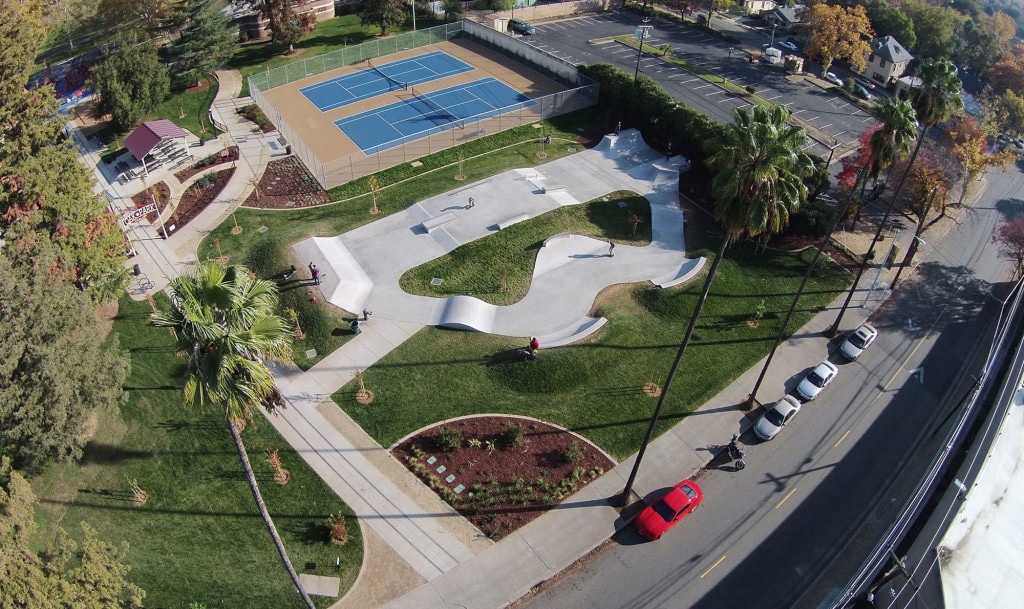To fence or not to fence? That is a question that is bound to pop up during the planning process for a public skatepark. With a lifetime of skateboarding experience and 20+ years as professional skatepark designers, we felt we had to weigh in with some expert analysis.
1. Atmosphere & Aesthetics
Modern skateparks are sculptural spaces that showcase the artistic and free-spirited act of skateboarding. Not only do most fences hide that beautiful architecture, they instantly create an atmosphere of distrust – transforming the skatepark into a cage where you are sentenced to ride.
Whether it’s a skatepark, playground or basketball court, a fence does not create an inviting aesthetic. Skatepark fences in particular send the signal that “if you aren’t a skateboarder, you’re not welcome here”. They also send a signal to trouble-makers that “this is a place where there won’t be any adults or non-skating community members”. If you examine skateparks that have issues with illicit behavior (graffiti, drugs/alcohol, etc.) the leading cause is a bad location that is tucked away and out of sight. Arguably the second most common characteristic is a fence. Not only does a fence reduce visibility and make it challenging for parents and law enforcement to see into the space, it creates a physical barrier of separation.
Skatepark designs that see the least amount of issues are open and blended naturally with their surrounding environment. They don’t create a rigid distinction of where the skatepark begins and ends – it’s all just public space. Rather than feeling insulated within the confines of a fenced skatepark, wannabe vandals feel uncomfortable knowing the public eye is on them.
2. Cost
Funding is a major issue for nearly all skatepark projects, so it’s often surprising when municipalities carve money out of their budgets for fences. As we’ll discuss later, there are contexts where a fence/barrier does make sense, but if your project doesn’t fit those characteristics, why reduce the skatepark’s square footage and number of features you can afford? Fencing a 5,000 square foot area with basic chain link costs roughly $15,000. Apply that ratio to 15,000 square feet and you’re looking at approximately $45,000 in fence costs. If you’re looking at a higher quality fence, costs just keep climbing.
When budgets are tight and a fence is under consideration, we’ll often recommend that our clients build as much skatepark as they can with available funds, see how the skatepark functions and then decide if a fence is a worthwhile phase-2 cost. With intelligent skatepark design and safe buffers from surrounding activities, they almost always discover that a fence is unnecessary.
3. Maintenance
Fences are popular targets of vandalism – whether it’s someone bending posts and panels out of boredom or a thief on a quest for scrap metal. Additionally, since fences are typically right up against the edge of the skatepark surface, they get slammed into by boards, bikes and bodies hundreds of times per day. As you can imagine, this takes a toll and causes frequent maintenance headaches for public works and parks & recreation staff. Maintenance is also synonymous with added costs – further support for the cost argument above.
4. Safety
As mentioned above, fences take a beating. Conversely, they can also dish out some pain. They are frequently installed right at the edge of the skating area creating entrapment concerns for arms and legs – especially when riders have a lot of momentum. Even if you’re able to avoid smacking or catching your hand, the mental distraction of having to carefully avoid a fence can negatively impact your performance.
Rather than being forced to stop short of the edge of concrete to avoid slamming into a fence, non-fenced skateparks allow a buffer area in the surrounding landscape of a couple feet where riders can gather themselves.
5. Functionality
Some municipalities argue that fences are justifiable because they help regulate the hours of skatepark use. We tend to disagree and argue that in many cases, fences do not actually accomplish anything.
- 99% of skateboarders stop riding when it gets dark because they can’t see and don’t want to hurt themselves.
- If someone, skateboarder or otherwise, really wants to get into a skatepark after dark, a 6’ tall fence is not going to stop them.
Proponents of fences describe a scenario where a municipal staff member or law enforcement officer comes to the skatepark when it gets dark to ensure everyone has left and to lock a gate.
What if this visit only included the first part?
They do a quick patrol of the skatepark and remind anyone who’s still there about the skatepark’s hours of operation. Anyone who wants to break this rule would be disciplined accordingly. Word travels fast in the skateboarding community and it wouldn’t be long before everyone understood that trying to ride in the skatepark after dark just wasn’t worth it – thus eliminating the headache of having to open/close a gate twice a day.
An often overlooked issue with fences/gates is what happens when that person responsible for opening the gate in the morning is out sick or not working because of a national holiday. For many adult skateboarders who have full-time jobs, holidays like Memorial Day and Labor Day are the perfect time to get out and skate. Unfortunately they are often greeted with locked gates and no way to access their favorite skateparks.
The other main argument supporting fences is that if there is illicit behavior in the skatepark, the facility can be locked until the skateboarding community has learned their lesson. Unfortunately, the people who typically engage in illicit behavior aren’t actually the skateboarders themselves, so this unfairly punishes youth who are pursuing a positive and healthy activity.
Designing a $25,000 fence into the skatepark before there’s actually been any issues creates an atmosphere of distrust as well as an antagonistic relationship between the municipality and its skateboarding community.
Why not build a skatepark without a fence to start? If there are issues and you want to close the park to teach a lesson, install a temporary fence for roughly $500. If the issues continue, which they shouldn’t if the skatepark was intelligently sited, that is when you consider a permanent fence.
Where’s the proof that this approach can work? Just look at the thousands of skateparks across the country that aren’t fenced and function without issue.
If you have to do a fence, do it right
Every skatepark site is different and in certain situations, a fence or barrier of some kind does make sense. It’s important to be conscious of what is happening around the skatepark and to create safe buffer zones.
It’s no secret that skateboards can get loose and creep past the edge of skatepark concrete into the surrounding environment. Whether it’s a busy street, a children’s playground or a steep hillside, if there isn’t enough space for runaway skateboards to naturally run out of steam, then we recommend a barrier of some kind.
How to do it right:
- Keep it low – a skateboard is less than 1’ off the ground, so a barrier that is 4’ tall will provide more than enough protection
- Use high-quality materials – no chain link, no prison-style hooks
- Consider concrete walls instead of fences
- Just because you need a barrier for one side, does not mean you have to enclose the entire skatepark
- Offset the fence from the edge of the skating area by atleast a couple feet

